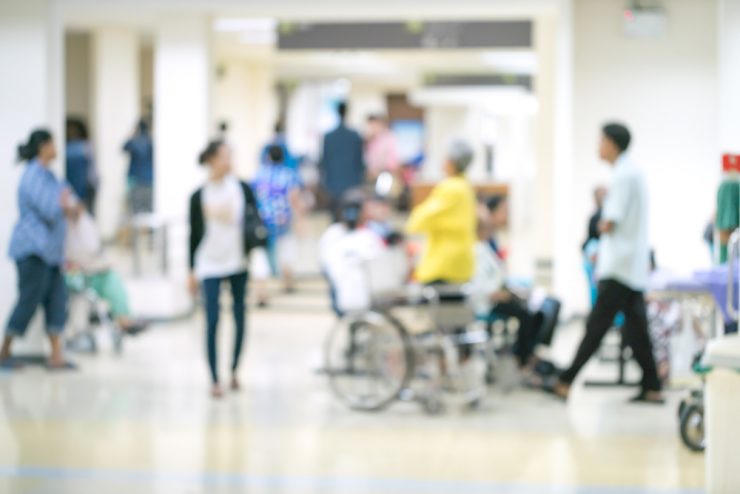Continuation of Recovery from Part 4
Be prepared for behaviour changes
Anyone who has had a stroke recently can be a changed person and sometimes act irrationally. This is because of cognitive and psychological impact. They get angry and unreasonable. Do not take it personally. The person shall return to his/her old self as the rehabilitation progresses.
Try to maintain patience and be positive
Rehabilitation process can be a frustrating and slow process, and there will be a time when you feel little progress is made. Praising and encouraging any progress, can help and motivate someone who has had a stroke to achieve their goal.
Make time for you and your own health should not be ignored if you are taking care of someone who has had a stroke recently. Pursuing interest and socializing shall help you to deal with the situation in a better way.
Ask for help
A range of resources and services are available to support people recovering from strokes and also for the caretakers and families. It ranges from psychological support to families and caretakers to equipment which help in mobility. The hospital staff shall guide you with relevant information and advice.
Prevention
Prevention of stroke can be done by avoiding excessive alcohol drinking and smoking, regular exercise and maintaining a healthy diet.
Diet
Strokes are commonly caused due to poor diet. Fatty foods lead to building up of plaques in arteries, also being overweight can result in high blood pressure. A high fibre, low fat diet is advised which includes vegetable and fruits and whole grains. Salt intake should be limited as excess salt increases blood pressure. Salts are of two types – unsaturated and saturated. Avoid food that contains saturated fats as they increase cholesterol levels.
Foods with high content of saturated fat include:
Meat pies,
Sausages of meat,
Butter,
Ghee – a butter used in Indian cooking,
Lard,
Cream,
Hard cheese,
Biscuits and cakes,
Foods containing palm oil or coconut
Unsaturated fat in small quantity should be present in balanced diet, this shall reduce cholesterol levels.
Foods with high quantity of unsaturated fat include:
Oily fish,
Avocados,
Seeds and nuts,
Vegetable, sunflower, olive, and rapeseed oils
Exercise
A combination of regular exercise with healthy diet is an appropriate way of maintaining healthy weight. Healthy weight also reduces risks of developing high blood pressure. Blood and heart circulation improves with regular exercise, it maintains blood pressure at required levels and also cholesterol levels get lower. Vigorous exercise for 30 minutes each day, five times in a week is advisable. The exercise needs to be strenuous, so that the heart beats faster with slight feeling of breathlessness like brisk walking or climbing a hill.
In case you have had a stroke recently, exercise plan should be discussed with the staff of rehabilitation team. Following the stroke, regular exercise might be impossible initially but can be progressed after some time.
Smoking
Smoking causes high blood pressure and also causes fatty plaques in arteries, which can be a major cause for stroke. Smoking helpline of NHS offers encouragement and advice to quit smoking. You can dial 0800 022 4 332 or also visit Go smoke free website of NHS. Advice from pharmacist or GP can also be helpful to give up smoking.
Alcohol
Excessive consumption of alcohol leads to irregular heartbeat and high blood pressure. Both can cause stroke. Your daily alcohol levels are about 3-4 units for men and 2-3 units for women.
Complications
Dysphagia
Stroke can cause damage to the normal swallowing reflex and makes food particles enter the respiratory tract. Swallowing problems are called as dysphagia. Dysphagia, damages lungs and also triggers lung infection. To avoid complication due to dysphagia, a feeding tube is used to feed. This tube is passed through nose and then to stomach. The use of feeding tube varies from months to weeks but rarely can it be used for more than 6 months.
Hydrocephalus
Hydrocephalus occurs when the ventricles in the brain have cerebrospinal fluid in large quantities. At least 10% of people with haemorrhagic stroke develop hydrocephalus. Brain produces cerebrospinal fluid; it protects spinal cord and brain and also carries waste from cell of brains. This flows through ventricles continuously over brain and spinal cord surface. Excess CSF drains from brain and is absorbed by body. Subarachnoid haemorrhage causes damage which stops draining of CSF and excess fluid is built up. The symptoms include:
headaches,
vomiting and sickness
Balance loss
By placing tube in brain and draining the fluid through the tube, this condition can b treated.
Deep vein thrombosis
At least 5% of individuals who experienced stroke shall develop a blood clot in leg called as deep vein thrombosis (DVT). It occurs when people lose movement in legs, as blood flow slows down because of immobility also increasing the blood pressure and chances of blood clot.
Symptoms of DVT include:
Swelling,
Pain,
Warm skin,
Tenderness, and
Redness, particularly in the leg, below knee
Immediate treatment will be required as there can be chances for the clot to move in lungs, called as pulmonary embolism and can be a severe condition. Anti clotting medicines are used to treat DVTs










